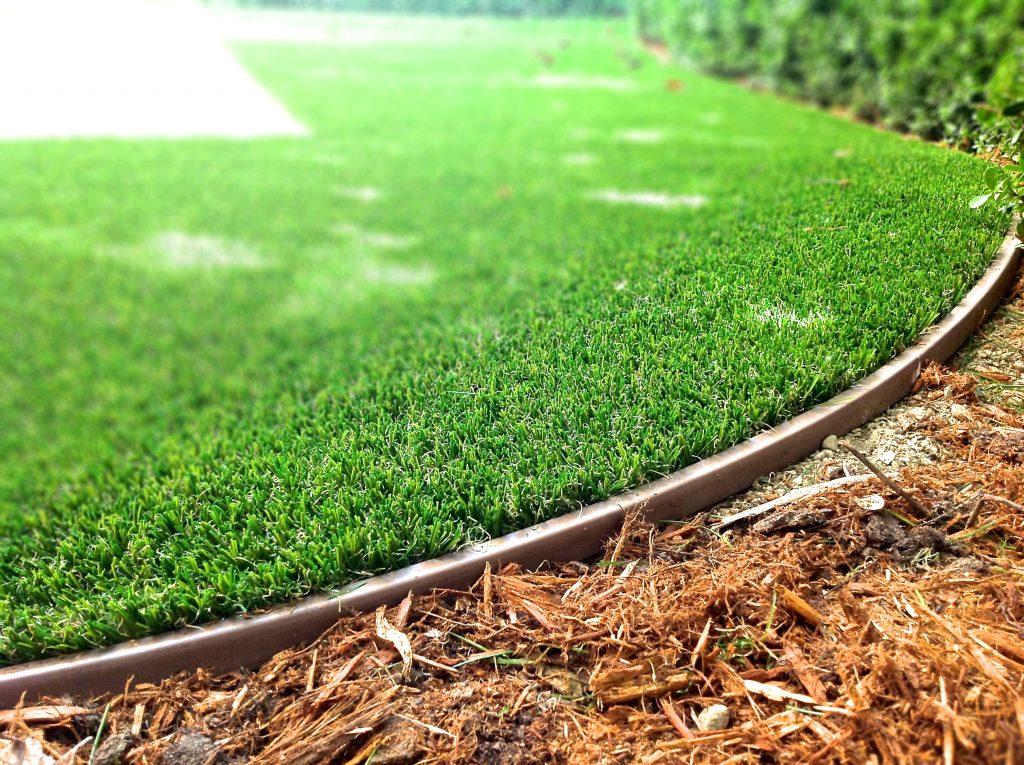Delve Into the Environmental Conveniences of Opting for Artificial Lawn Solutions
The adoption of man-made lawn services provides a compelling chance to resolve pressing ecological difficulties. By significantly decreasing water use and reducing the application of dangerous chemicals, these choices not only promote sustainable landscaping but also secure neighborhood environments.
Water Conservation Advantages
One of the most substantial advantages of man-made lawn is its capacity to preserve water. In contrast, man-made grass does not need watering, significantly decreasing the general need for water sources.
By removing the need for routine watering, synthetic grass adds to sustainable landscape methods and aids reduce the environmental effect of extreme water intake. The preservation of water prolongs to the decrease of drainage, which can lead to dirt disintegration and river air pollution.
Additionally, the setup of man-made lawn permits municipalities and property owners to allot water sources more effectively, concentrating on crucial uses such as drinking water and agriculture. The shift towards synthetic grass not only advertises liable water usage but additionally straightens with wider ecological objectives targeted at maintaining all-natural resources.
As communities increasingly focus on sustainability, the water preservation advantages of artificial grass provide a compelling situation for its adoption in property and industrial landscape design jobs.
Minimized Chemical Usage
The transition to synthetic grass considerably decreases the reliance on chemical therapies generally made use of in all-natural lawn maintenance. Conventional grass administration usually involves the application of herbicides, pesticides, and plant foods to promote development and control insects. These chemicals can posture dangers to human health, regional wildlife, and the atmosphere, adding to dirt and water contamination.
In contrast, synthetic grass eliminates the demand for these dangerous compounds. As soon as set up, it calls for very little maintenance, mostly consisting of regular cleaning and infrequent infill replenishment. This reduction in chemical use not just profits the immediate setting however also adds to wider eco-friendly stability. By lessening the launch of artificial compounds into the ecological community, synthetic grass advertises much healthier dirt and water systems.
In addition, the lack of chemical drainage connected with synthetic grass setups assists safeguard regional waterways from contamination, sustaining water life and preserving biodiversity. Arizona turf. As areas increasingly prioritize sustainable techniques, going with fabricated turf offers a sensible solution that straightens with ecological preservation goals. Through this shift, homeowner can take pleasure in lavish environment-friendly rooms without endangering eco-friendly wellness, leading the way for a more lasting future
Lower Carbon Footprint

Moreover, the installation of man-made turf can lead to substantial water preservation. Natural yards call for considerable quantities of water for watering, which not just includes to the carbon footprint related to water removal and therapy yet also stress regional water sources. In comparison, synthetic grass requires marginal maintenance, requiring no watering, consequently significantly decreasing water use and its linked energy costs.
Furthermore, the long life of synthetic grass contributes to its reduced carbon effect. With a lifespan of approximately 15 years or even more, the requirement for regular substitutes is diminished, resulting in less waste and lower power usage in production and throwing away typical grass options. Overall, artificial turf offers a sustainable alternative for ecologically mindful landscaping.
Habitat Conservation
Environment conservation is an important consideration in the discussion over landscaping selections, especially when contrasting synthetic grass to all-natural turf. Natural grass yards often call for considerable maintenance, including making use of chemicals, herbicides, and fertilizers, which can negatively influence local environments. These chemicals can seep right into the dirt and rivers, hurting native vegetation and animals and interrupting neighborhood environments.
In comparison, synthetic lawn offers an opportunity to minimize the ecological footprint of landscaping. By selecting synthetic yard, property owners can minimize the disturbance of all-natural environments connected with traditional grass treatment techniques. Synthetic turf removes the need for damaging chemicals, consequently protecting close-by wildlife and preserving the integrity of surrounding environments. Moreover, the setup of synthetic grass can cause the conversion of former turf areas into even more biodiverse landscapes, such as pollinator yards or native plant locations, which can support my explanation local wildlife.
Inevitably, the transition to synthetic grass not only preserves water and lowers maintenance initiatives yet likewise fosters an extra unified relationship in between human activities and the all-natural environment, promoting environment preservation in the process.
Long-Term Sustainability
Lasting sustainability is an essential consider assessing the advantages of synthetic grass over standard turf yards. Among the most significant advantages of fabricated lawn is its resilience; it can last approximately 15-20 years with minimal maintenance, whereas all-natural grass requires regular reseeding and replacement. This longevity minimizes the need for continuous sources, such as water, fertilizers, and pesticides, which are essential for keeping a healthy and balanced yard yard.
In addition, synthetic grass adds to a decrease in carbon emissions connected with lawn care tools. Conventional lawns typically require gas-powered lawn mowers, leaners, and blowers, every one of which add to air contamination. Arizona turf. On view it the other hand, synthetic lawn removes the requirement for such equipment, promoting a cleaner setting
Furthermore, the manufacturing of synthetic grass progressively utilizes recycled materials, improving its sustainability profile. As makers take on environment-friendly practices, the ecological impact of synthetic grass proceeds to decrease.

Conclusion
The adoption of synthetic lawn remedies presents considerable environmental advantages, including considerable water preservation, reduced dependence on hazardous chemicals, and a reduced carbon footprint. Additionally, synthetic grass aids in protecting all-natural environments by decreasing land disruption and advertising long-lasting sustainability via using durable materials. Collectively, these variables emphasize the possibility of synthetic grass to contribute positively to environmental health and wellness and offer a feasible my site choice to traditional landscape design practices in a progressively resource-conscious world.
In comparison, artificial lawn does not need watering, substantially reducing the general demand for water resources. By minimizing the launch of artificial compounds right into the environment, artificial lawn promotes healthier soil and water systems.
In addition, the installation of artificial lawn can result in considerable water preservation. In comparison, man-made lawn needs marginal upkeep, requiring no watering, thereby dramatically reducing water use and its associated power prices.

Comments on “Top Phoenix Turf Companies Delivering Premium Synthetic Grass Solutions”